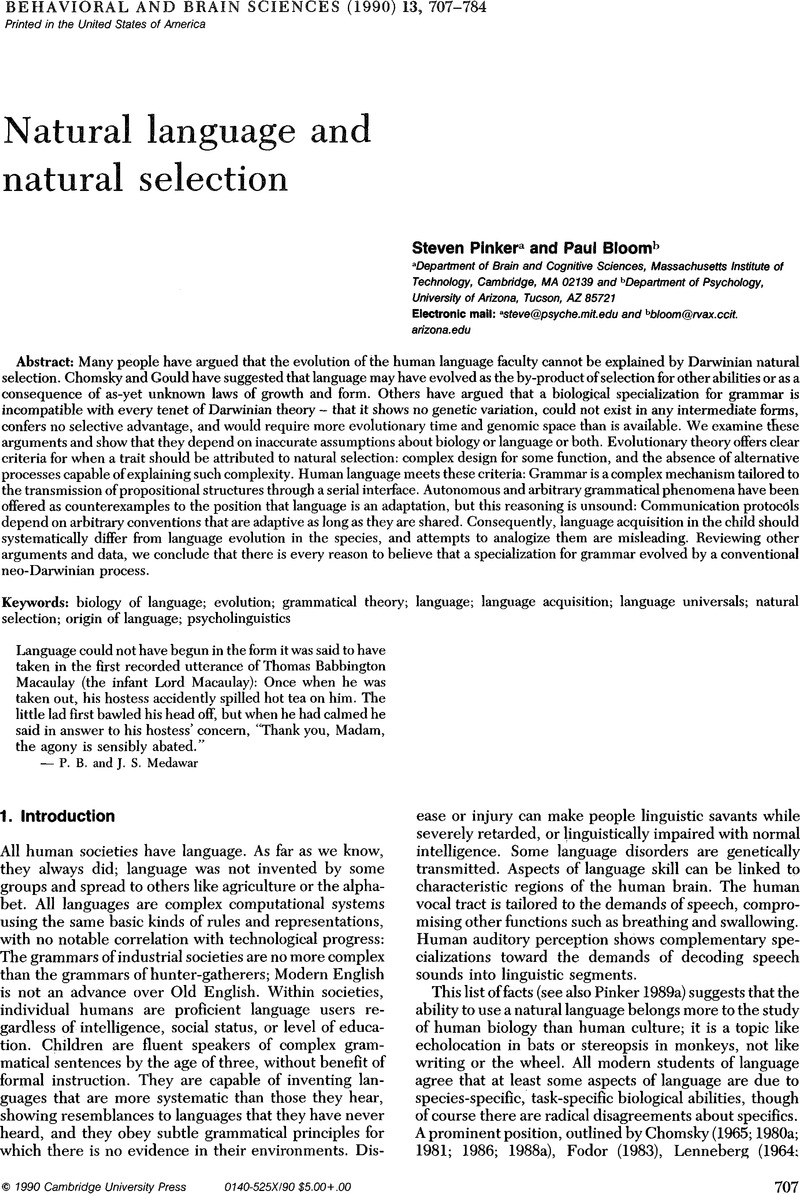Crossref Citations
This article has been cited by the following publications. This list is generated based on data provided by Crossref.
Botha, Rudolf P.
1997.
Neo-Darwinian accounts of the evolution of language: 1. Questions about their explanatory focus.
Language & Communication,
Vol. 17,
Issue. 3,
p.
249.
Botha, Rudolf P
2002.
Did language evolve like the vertebrate eye?.
Language & Communication,
Vol. 22,
Issue. 2,
p.
131.
Seyfarth, Robert M.
and
Cheney, Dorothy L.
2008.
Primate social knowledge and the origins of language.
Mind & Society,
Vol. 7,
Issue. 1,
p.
129.
Chomsky, Noam
2017.
Language architecture and its import for evolution.
Neuroscience & Biobehavioral Reviews,
Vol. 81,
Issue. ,
p.
295.



